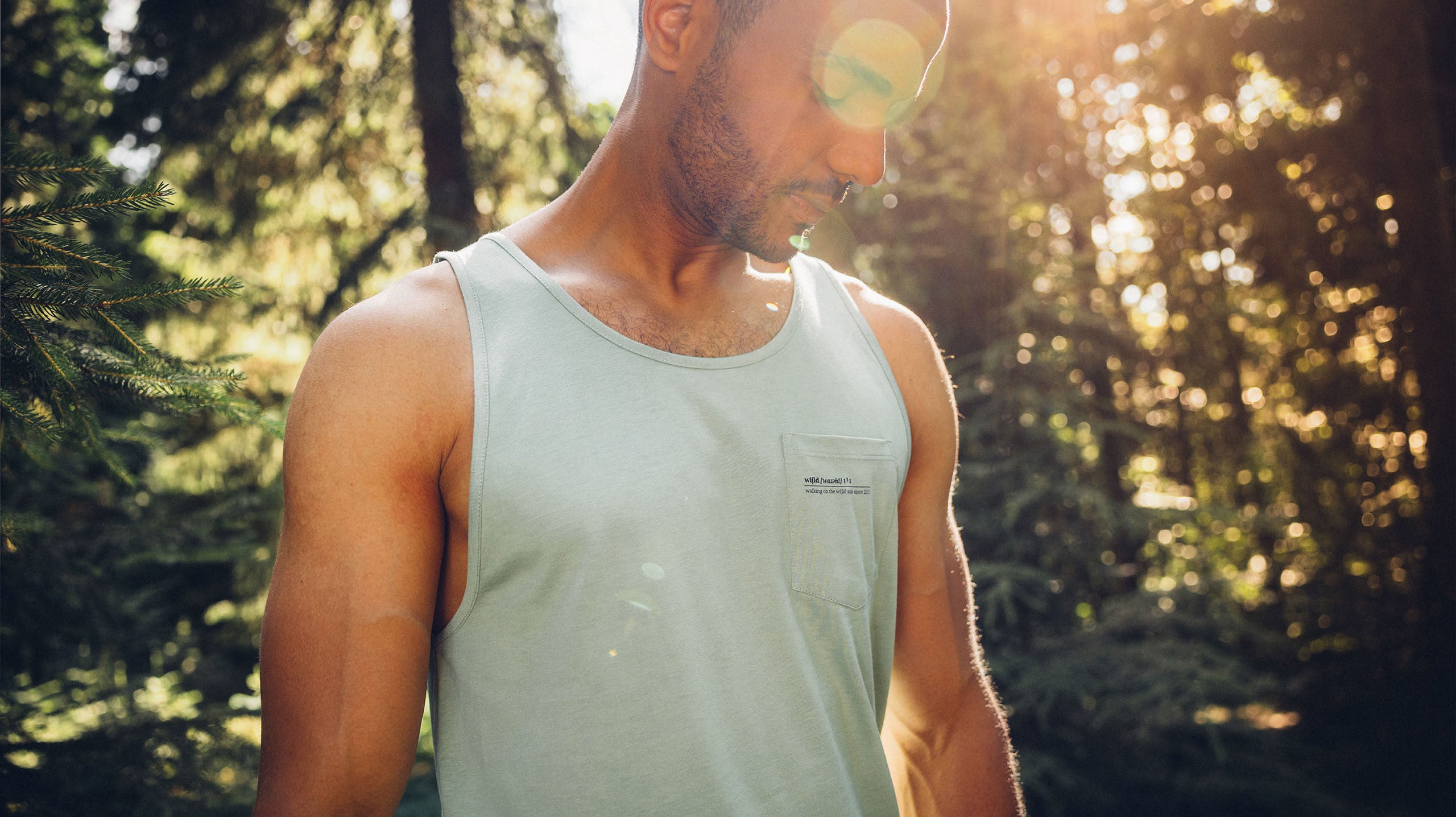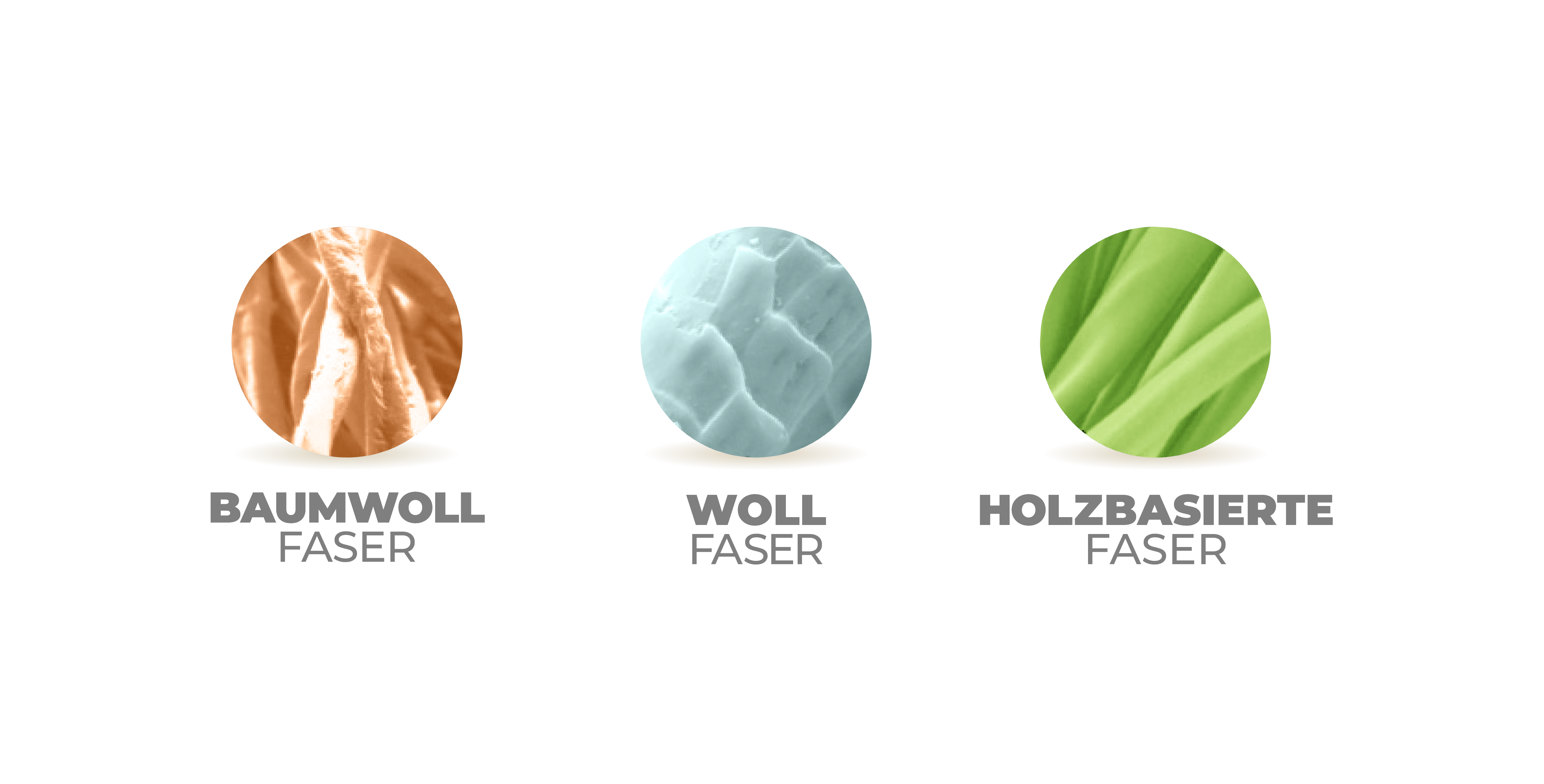“Clothing made from wood” might sound strange or even scratchy at first.
But our WoodShirts, tank tops, long sleeves, boxers, socks, and hoodies are made from an exceptionally soft fabric that feels amazing against the skin. Beyond their many ecological advantages, these garments offer unique properties and outstanding comfort.
In short: we create wood-based fashion that feels fantastic to wear. Curious about what makes this fabric so special—and why it’s surprisingly smooth and breathable? We’d love to tell you more.
WHY WOODEN FASHION IS SO SILKY SOFT
Our skin reacts differently to the environment depending on our skin type. In addition to external environmental influences, such as the sun, our skin can of course also react to textiles. Many people complain of intolerance to various textiles, as their rough surface causes itching and irritation. People with neurodermatitis in particular often have problems with the skin tolerance of certain fibers.
The wood fibers in our garments have an exceptionally smooth and skin-friendly surface that caresses the skin rather than irritating it. With less friction, the fabric wears like a second skin—making it ideal for sensitive skin types.
In fact, a study conducted by University Hospital Heidelberg found that over 80% of participants experienced noticeable improvements in skin condition when wearing wood-based fibers.
The results highlighted both the skin-soothing feel and the thermoregulatory properties of the material.
WOODEN FABRIC – THERMOREGULATING AND BREATHABLE
What makes fabrics feel pleasant isn’t just how they feel to the touch. It’s also how they interact with our skin climate. A fabric’s ability to regulate temperature has a major impact on how comfortable it feels, especially during summer or physical activity.
When body temperature rises, we naturally produce more sweat. As sweat evaporates from the surface of the skin, it helps cool the body, a critical part of our natural temperature regulation. Under heavy exertion, a person can lose up to 1.8 liters of sweat per hour. That’s why body-close textiles need to offer fast and even moisture transport to support this cooling effect.
Key fabric qualities for optimal comfort include:
- High moisture absorption capacity
- Fast wicking performance
The wood fibers we use for our sustainable clothing offer significantly higher water absorption and wicking speed than cotton or polyester.In fact, within just 20 seconds, their maximum absorption capacity reaches 380% - compared to only 16–19% for cotton and polyester. Thanks to their unique nanostructure, wood fibers quickly transport moisture into their core, enabling effective thermoregulation. This ensures a uniform distribution of moisture, leading to optimal evaporation at the fabric surface.
Even though many assume polyester dries faster, tests show no difference in drying speed when comparing equal moisture levels in polyester and wood-based textiles. Unlike polyester - which has a closed fiber structure that can't absorb moisture - wood fibers integrate water into their interior, keeping you dry and comfortable rather than letting it sit on the surface.
Wood fibers have very special thermophysiological properties. This means that our clothing offers very good thermal insulation in cold weather. At the same time, when it is warm or when you are physically active, sweat is removed from the body and released into the environment to optimally support the cooling of the body.
WHY ARE WOODSHIRTS ODOR-INHIBITING?
There are numerous microorganisms on our skin that are important for our skin flora. When we sweat, the microorganisms can multiply due to the moisture, start to work and the smell of sweat develops. The bacteria naturally get into the fabric through skin contact and sweat. It is sometimes extremely difficult to remove these smells from textiles, and this problem is particularly common with sportswear made of polyester fabrics.
Our wood-based fabric stays fresher for longer because it actively inhibits bacterial growth. Compared to other textiles, the difference is striking:
- Synthetic fibers show up to 100–1,000 times more bacterial growth
- Cotton still allows around 10 times more growth than wood fiber
Why? Moisture plays a key role.
In conventional fibers, water remains on the fabric surface—an ideal environment for bacteria.
Our wood fiber, however, absorbs moisture deep into its core, effectively removing the bacteria’s access to nutrients. Additionally, bacteria struggle to adhere to the smooth surface of wood fibers, unlike rougher synthetic or cotton fabrics. By managing moisture better and eliminating breeding grounds, our fiber’s natural antibacterial properties keep garments feeling clean—and smelling fresh—for longer.
















